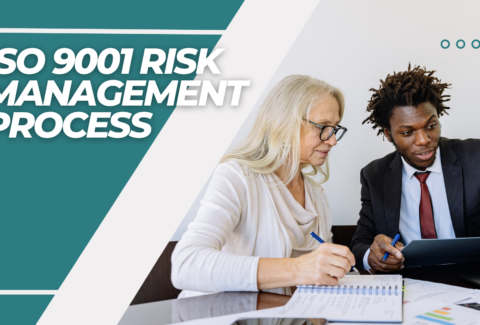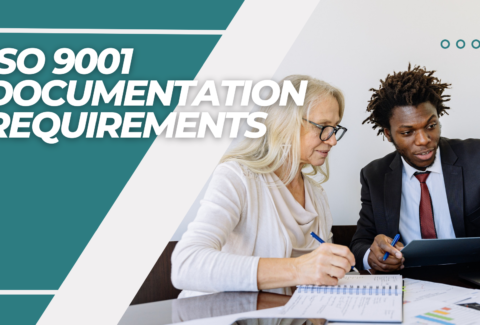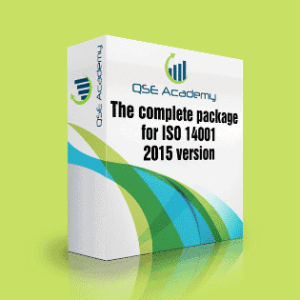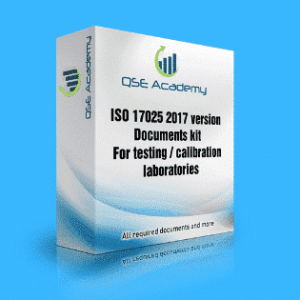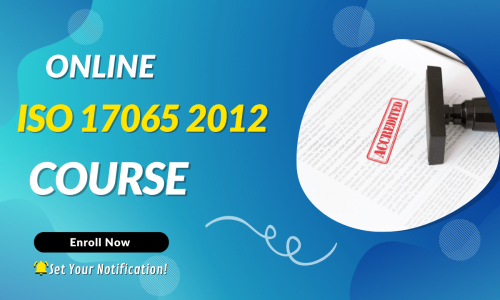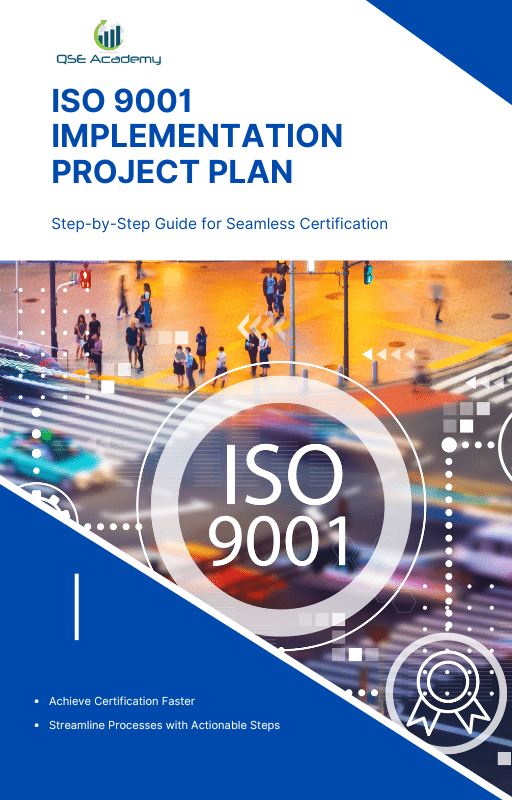How often is the iso 9001 audit?
How often is the iso 9001 audit?
If your organization is certified to ISO 9001 or thinking about pursuing certification, you might be wondering, “How often is the ISO 9001 audit?” It’s a great question, and understanding the answer can help you plan ahead and keep your quality management system (QMS) in great shape.
ISO 9001 audits play a crucial role in ensuring that businesses consistently meet the requirements of the standard while driving continuous improvement. These audits help organizations stay compliant, identify opportunities for growth, and maintain customer trust. But they’re not just a one-time event—they happen on a regular schedule, depending on where you are in the certification process.
In this article, we’ll break down how often the ISO 9001 audit is conducted, why the schedule matters, and what you can do to prepare for them. By the end, you’ll feel confident about how these audits work and how they can help your organization grow. Let’s dive in!
What Is the ISO 9001 Audit?
Before we get into how often the ISO 9001 audit is conducted, let’s take a moment to understand what it actually is and why it’s so important. The ISO 9001 audit is a detailed review of your organization’s quality management system (QMS). Its purpose is to ensure that your processes meet the requirements of the ISO 9001 standard and are working effectively to deliver consistent quality.
Why Is the Audit Necessary?
At its core, the ISO 9001 audit is about accountability and improvement. It’s not just a formality—it’s a way to verify that your QMS aligns with global standards and drives real results. For certified organizations, regular audits help maintain certification and demonstrate a commitment to quality. For those seeking certification, the audit is the key step to showing that your systems are ready for the ISO 9001 seal of approval.
Auditors evaluate everything from how your processes are documented to how they’re implemented in day-to-day operations. The findings of an audit can highlight your organization’s strengths and point out areas where improvements can be made. It’s all part of the journey toward excellence.
Types of ISO 9001 Audits
To understand how often the ISO 9001 audit is conducted, it’s important to know there are different types of audits involved:
- Internal Audits: These are conducted by your organization or an internal auditor you hire. They’re like a self-check to ensure your QMS is compliant and ready for external reviews.
- Certification Audits: These are performed by an external certification body to confirm that your QMS meets the ISO 9001 standard. This is the step that earns your organization its certification.
- Surveillance Audits: Once certified, your organization will undergo annual surveillance audits to verify that you’re still meeting the requirements of the standard.
- Recertification Audits: Every three years, a full recertification audit is conducted to renew your ISO 9001 certification.
Each type of audit serves a unique purpose, but together they ensure that your QMS stays on track and continues to improve over time.
Now that you know what the ISO 9001 audit is and why it’s essential, let’s dive into the big question: How often is the ISO 9001 audit conducted, and what does the schedule look like for different types of audits? Keep reading to find out!
Why Are ISO 9001 Audits Conducted on a Regular Schedule?
Now that we know how often the ISO 9001 audit is conducted, you might be wondering why it follows such a structured timeline. The answer lies in the very purpose of ISO 9001—to help organizations maintain consistent quality, drive continuous improvement, and meet customer expectations. Let’s explore why regular audits are so important and how they benefit your organization.
1. Maintaining Compliance and Certification
The most straightforward reason why ISO 9001 audits happen regularly is to ensure your organization continues to meet the requirements of the standard. Certification isn’t a one-time achievement—it’s an ongoing commitment. Regular surveillance and recertification audits verify that your quality management system (QMS) is still compliant, helping you maintain your certification over time.
Imagine skipping a few annual surveillance audits—your certification could lapse, and you’d lose the trust and credibility that comes with it. By sticking to the regular schedule of audits, you’re showing your customers and stakeholders that quality is always a top priority.
2. Encouraging Continuous Improvement
Another reason the ISO 9001 audit happens on a structured timeline is to encourage businesses to continually improve. The annual surveillance audits and three-year recertification audits ensure that organizations don’t get complacent.
For instance, during a surveillance audit, an auditor might identify a nonconformance or suggest areas for improvement. This feedback gives your organization the chance to refine its processes, address gaps, and implement new strategies for growth. Regular audits keep the momentum going and ensure you’re always working toward better quality.
3. Ensuring Consistency in Business Operations
Regular audits are also critical for maintaining consistency across your business operations. Whether it’s your internal processes, customer interactions, or supplier relationships, consistency is key to building trust and delivering reliable results.
By conducting audits at regular intervals, organizations can identify and correct inconsistencies before they affect the bigger picture. This is especially important for businesses operating across multiple sites or departments, where alignment can be challenging.
4. Adapting to Change
The business world doesn’t stand still—new technologies, customer expectations, and industry regulations are constantly evolving. Regular ISO 9001 audits ensure that your QMS adapts to these changes rather than becoming outdated.
For example, if your organization introduces new products or services, or if your industry adopts new compliance standards, the audit process ensures that these changes are reflected in your QMS. The scheduled audits act as a checkpoint to keep your processes relevant and effective.
5. Building Customer and Partner Confidence
When you tell your customers and business partners that your organization is ISO 9001 certified, they know that regular audits are part of the process. This builds confidence in your ability to deliver consistent quality and meet their expectations.
The frequency of the ISO 9001 audit reassures them that your certification isn’t just a one-time achievement—it’s an ongoing effort to maintain high standards. It’s proof that your organization is serious about quality and accountability.
Regular audits are the backbone of ISO 9001’s success. They create a structured approach to compliance, improvement, and consistency, all while helping your organization adapt to change and build trust with stakeholders. In the next section, we’ll dive into what actually happens during an ISO 9001 audit and how you can prepare for it. Let’s keep the conversation going!
What Happens During an ISO 9001 Audit?
If you’ve ever wondered what actually happens during an ISO 9001 audit, you’re not alone! Knowing what to expect can take the stress out of the process and help you feel more prepared. Whether it’s your first certification audit, an annual surveillance audit, or a recertification audit, the steps are quite similar. Let’s break down what’s involved when the ISO 9001 audit is conducted.
1. The Opening Meeting
Every ISO 9001 audit starts with an opening meeting. This is where the auditor introduces themselves, explains the purpose of the audit, and outlines what will happen during the process. They’ll also confirm the scope of the audit and ask questions about your organization’s structure and processes.
Think of this as setting the stage—it’s a chance for everyone to get on the same page before diving into the details.
2. Reviewing Documentation
One key part of what’s involved in the ISO 9001 audit is the review of your documentation. Auditors will want to see things like your quality manual, standard operating procedures, records of internal audits, and other documents that demonstrate how your quality management system (QMS) is being implemented.
This step ensures that your documentation aligns with the ISO 9001 standard and that it reflects how your processes work in practice. Having clear, up-to-date records makes this part of the audit go smoothly.
3. Observing Processes in Action
After reviewing your documents, the auditor will move on to observing your processes in action. This is one of the most hands-on parts of the audit. They might visit different departments, observe workflows, and even speak with employees to understand how your QMS is applied on a daily basis.
For example, they might ask how customer complaints are handled, how risks are assessed, or how production processes are monitored. Their goal is to ensure that your team is following the procedures outlined in your QMS and that the system is effectively driving quality improvements.
4. Identifying Nonconformances
During the audit, the auditor will be looking for areas where your QMS doesn’t fully comply with the ISO 9001 standard. These are called nonconformances.
Nonconformances can range from minor issues (like missing records) to more significant gaps (like processes not being followed consistently). Don’t worry—nonconformances aren’t failures. They’re opportunities to identify weaknesses and make improvements.
After identifying any nonconformances, the auditor will document them and may provide recommendations for corrective actions.
5. The Closing Meeting
Once the audit is complete, the auditor will hold a closing meeting to review their findings. This is where they’ll discuss any nonconformances, highlight your organization’s strengths, and provide feedback on areas for improvement.
If the audit is part of the certification process, the auditor will explain the next steps, like addressing nonconformances and receiving your certification decision. For surveillance or recertification audits, they’ll confirm whether your organization continues to meet the ISO 9001 requirements.
6. Post-Audit Actions
After the audit, your organization will need to take any necessary corrective actions to address nonconformances. This might involve updating procedures, improving documentation, or retraining employees.
By completing these actions and demonstrating your commitment to improvement, you’ll not only meet the ISO 9001 requirements but also strengthen your overall quality management system.
Understanding what happens during the ISO 9001 audit can help you feel more prepared and confident. From the opening meeting to the post-audit actions, every step is designed to ensure your QMS is working effectively and delivering results. In the next section, we’ll share tips on how to prepare for regular audits so you can make the most of the process. Let’s keep going!
Tips to Prepare for Regular ISO 9001 Audits
Preparing for an ISO 9001 audit doesn’t have to be stressful. With a little planning and some practical steps, you can approach audits with confidence and make the process smoother for your entire organization. Since we now know how often the ISO 9001 audit is conducted—whether it’s annual surveillance audits, the initial certification audit, or recertification every three years—being prepared is key to staying compliant and maintaining your certification. Here are some friendly tips to help you get ready!
1. Conduct Regular Internal Audits
One of the best ways to stay ready for any ISO 9001 audit is to perform regular internal audits. Think of these as your practice runs—they help you identify gaps, address potential issues, and ensure your quality management system (QMS) is functioning as it should.
By scheduling internal audits at least once a year (or more often for high-risk areas), you can catch nonconformances early and take corrective action before the external audit. Plus, internal audits build confidence among your team and ensure everyone is on the same page.
2. Keep Documentation Up to Date
One of the most important elements involved in the ISO 9001 audit is your documentation. From your quality manual to your process records, auditors will want to see that your documentation accurately reflects how your QMS operates.
Make it a habit to review and update your documentation regularly. This includes standard operating procedures, risk assessments, customer feedback records, and corrective action logs. When your documents are well-organized and current, it’s much easier to demonstrate compliance during the audit.
3. Engage and Train Your Team
Your team plays a huge role in the success of the audit. During the ISO 9001 audit, auditors may interview employees to understand how they apply the QMS in their day-to-day work. It’s important that everyone understands their role and how it connects to the organization’s quality goals.
Hold regular training sessions to keep your team informed about ISO 9001 requirements and the importance of audits. Encourage open communication so employees feel comfortable asking questions or sharing feedback about the QMS. A well-prepared team makes a great impression during the audit and ensures smooth operations.
4. Treat Each Audit as an Opportunity
Instead of viewing the audit as a test, think of it as an opportunity to improve. The ISO 9001 audit is designed to help your organization identify areas for growth, enhance efficiency, and deliver better results. When nonconformances are identified, treat them as valuable insights rather than failures.
By addressing these findings and making adjustments, your QMS becomes stronger and more effective. This mindset not only helps during the audit but also fosters a culture of continuous improvement within your organization.
5. Review Previous Audit Results
If your organization has been through previous audits, take some time to review the findings. Were there any nonconformances or recommendations? Have those areas been addressed?
Auditors will often follow up on issues identified in past audits to ensure they’ve been resolved. By proactively addressing these points, you show that your organization is committed to improvement and takes the audit process seriously.
6. Establish Clear Communication Channels
During the audit, clear communication between your team and the auditor is essential. Assign a point of contact—such as a quality manager or team leader—who can coordinate the audit process, answer questions, and provide documentation as needed.
Having someone who is well-versed in your QMS and can act as a liaison ensures that the audit flows smoothly and that any questions are addressed promptly.
7. Schedule Time for Preparation
Life gets busy, and it’s easy for audit preparation to fall to the bottom of the priority list. To avoid last-minute scrambles, schedule dedicated time to prepare for the ISO 9001 audit. This might include holding team meetings, conducting mock audits, or reviewing documentation.
By setting aside time in advance, you can ensure that your organization is fully ready when the auditor arrives.
Why Preparation Matters
Preparing for regular ISO 9001 audits isn’t just about passing—it’s about making the most of the process to strengthen your organization. When you’re proactive, organized, and focused on improvement, the audit becomes a valuable tool for achieving your quality goals and maintaining customer trust.
In the next section, we’ll wrap up by revisiting the big question: how often is the ISO 9001 audit conducted, and why is it worth it? Let’s finish strong!
Conclusion: How Often Is the ISO 9001 Audit and Why It’s Worth It
So, how often is the ISO 9001 audit? The short answer is that it depends on the type of audit. Organizations seeking certification start with the initial certification audit, followed by annual surveillance audits to ensure compliance. Every three years, a recertification audit takes place to renew the certification. In addition to these, regular internal audits are conducted as needed to keep your quality management system (QMS) on track.
These audits might seem like a lot at first glance, but they’re structured to help your organization succeed. By conducting regular audits, you can maintain compliance with the ISO 9001 standard, identify areas for improvement, and build a culture of continuous growth. Think of them as checkpoints that ensure your processes are delivering consistent quality and meeting customer expectations.
The frequency of ISO 9001 audits is designed to provide a balance between oversight and flexibility. Annual surveillance audits ensure you’re staying on track, while the three-year recertification audit allows you to step back and evaluate the bigger picture. When you factor in internal audits, you’re creating a cycle of improvement that strengthens your organization year after year.
Ultimately, ISO 9001 audits aren’t just about ticking boxes—they’re about driving real results. They help your business stay competitive, efficient, and trusted by customers and partners alike. By preparing for these audits and embracing the process, you’ll unlock valuable insights that can propel your organization forward.
So, the next time someone asks, “How often is the ISO 9001 audit?” you’ll not only know the answer—you’ll understand why these audits are worth it. With the right mindset and preparation, they’re an opportunity to make your organization the best it can be. You’ve got this!
Looking for More Resources on ISO 9001?
Looking for ISO 9001 Resources Tailored to Your Industry?
If this article helped clarify ISO 9001, take the next step with our industry-focused tools designed to simplify your certification journey:
📦 ISO 9001 Documentation Kits by Industry: Whether you’re in manufacturing, construction, consulting, or healthcare — we have complete, ready-to-use documentation tailored for your sector.
🎓 Online ISO 9001 Training: Learn how to implement ISO 9001 effectively with our easy-to-follow video lessons, real-world examples, and practical exercises.
📋 ISO 9001 Checklist: Download our step-by-step checklist to ensure your QMS meets all the 9001:2015 requirements from start to finish.
These resources are crafted to save you time, reduce stress, and help you achieve certification with confidence. Choose your industry and start now!

make ISO standards less intimidating and more approachable for everyone.
Whether it’s ISO 9001, ISO 22000, or the cosmetics-focused ISO 22716,
I’ve spent my career turning complex jargon into clear, actionable steps
that businesses can actually use. I’m not here to call myself an expert—I prefer “enthusiast” because I truly love what I do.
There’s something incredibly rewarding about helping people navigate food safety and quality management systems
in a way that feels simple, practical, and even enjoyable.
When I’m not writing about standards, you’ll probably find me playing Piano 🎹, connecting with people, or diving into my next big project💫.
- I’m an engineer specialized in the food and agricultural industry
- I have a Master’s in QHSE management and over 12 years of experience as a Quality Manager
- I’ve helped more than 15 companies implement ISO 9001, ISO 22000, ISO 22716, GMP, and other standards
- My clients include food producers, cosmetics manufacturers, laboratories, and service companies
- I believe quality systems should be simple, useful, and efficient
- Outside of work, I play piano and love learning something new every day
Let’s make ISO less about stress and more about success! 🙏


